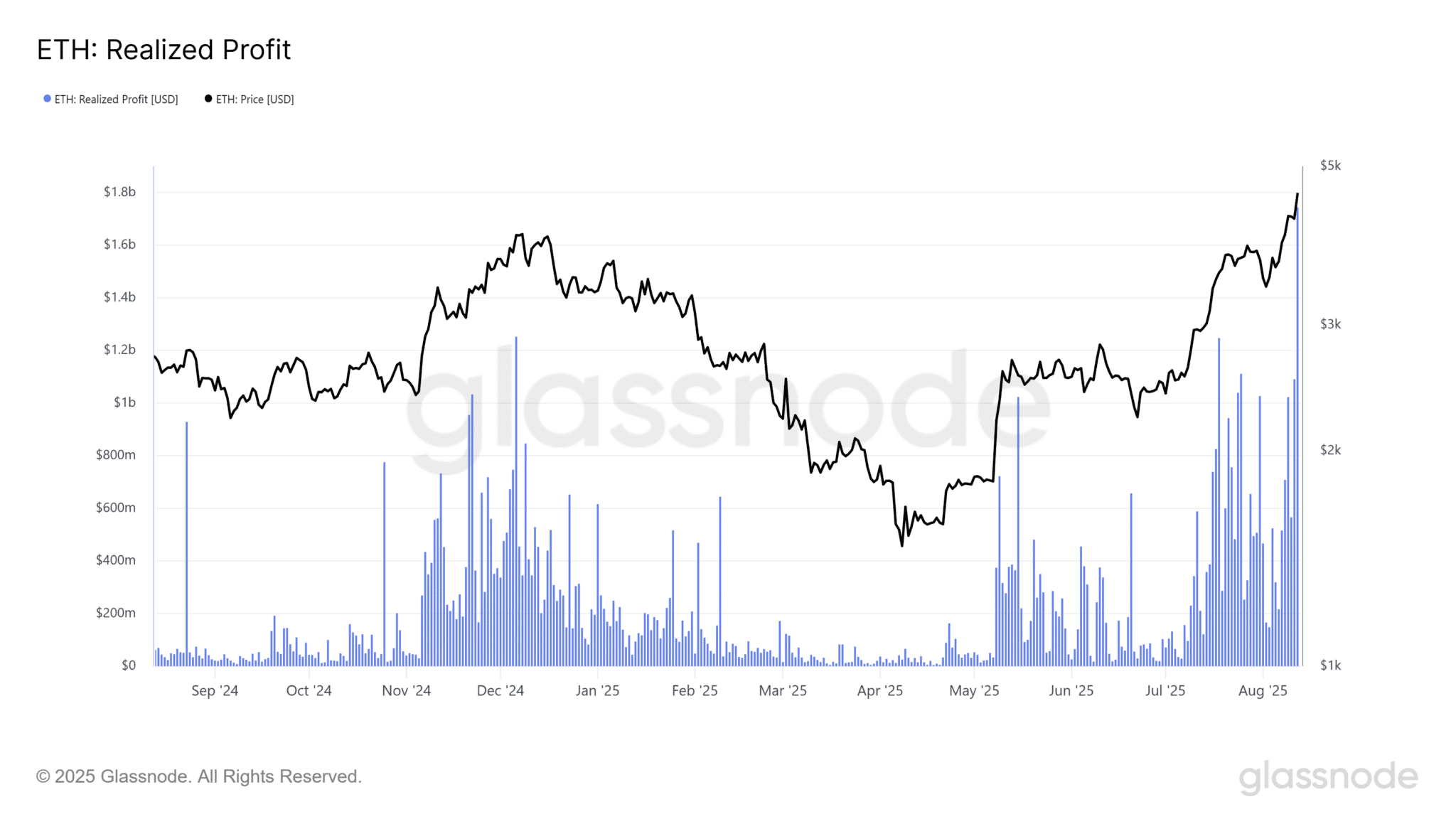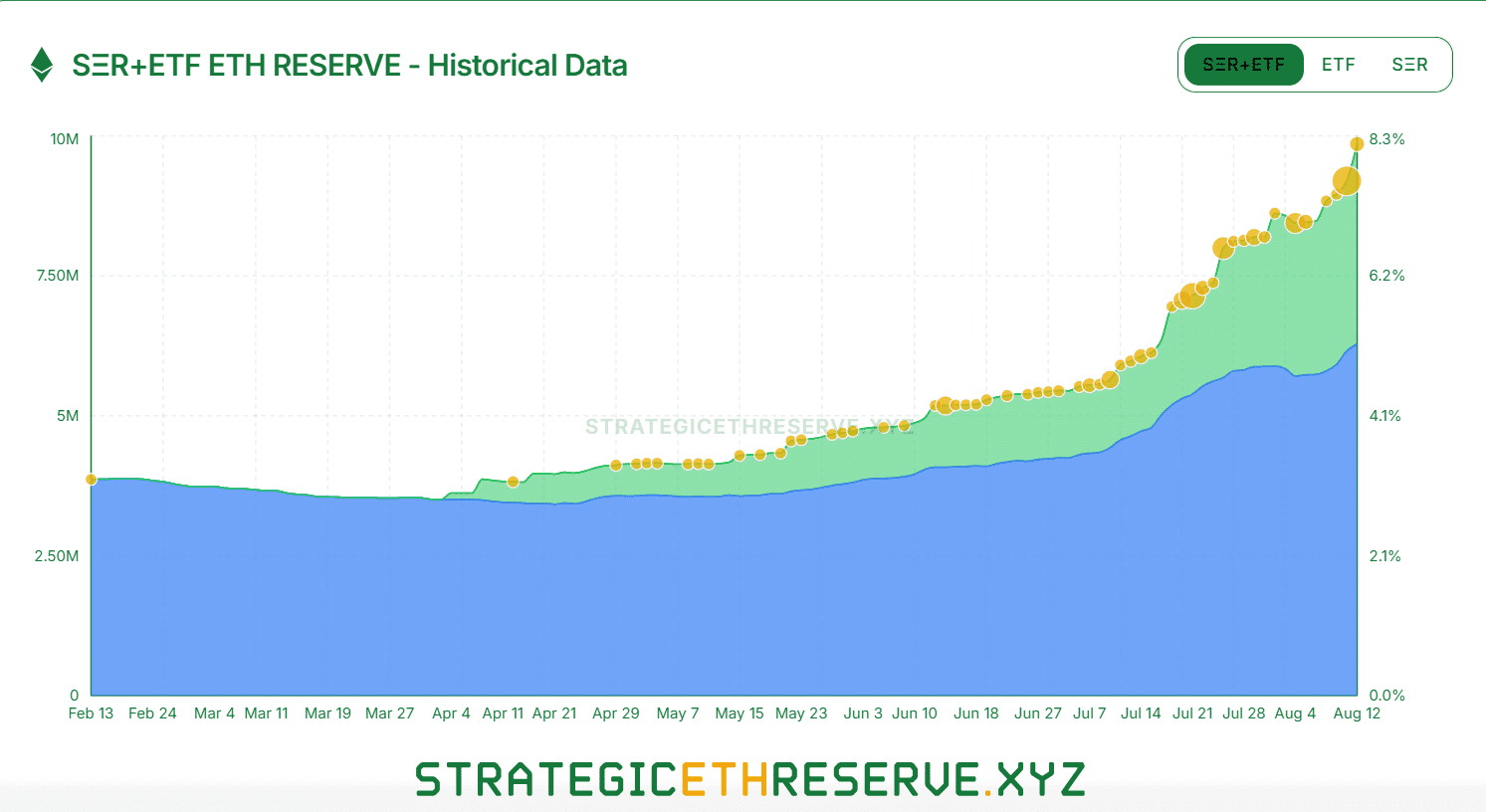How does 8% of ETH in institutional reserves impact the market?

ETH has recently been warmly embraced by some institutional investors. Currently, about 8% of ETH supply is locked in ETFs and corporate reserves. Is this altcoin transitioning from a tradable token to a strategic investment tool?
Ethereum [ETH] is currently advancing price discovery, and exit liquidity is also ready to flow in.
In the past, weak hand shakeouts would trigger panic (FUD), stifle fear of missing out (FOMO), and shift risk-averse sentiment. In fact, the attached chart shows that ETH's peak often coincides with a significant vertical rise in realized profits.
Traditionally, when profit-taking reaches extreme levels, selling pressure surges with market euphoria, creating significant exit pressure. However, a strong holder base rarely absorbs this supply, leading to a capitulation-driven cycle.

Compare it with the recent surge in realized profits.
Traders realized approximately $1.7 billion in ETH at a price of $4,590, marking the largest increase since 2021. In turn, this altcoin tested the absorption capacity of long-term holders and whale holders.
What were the results? ETH rose 2.58% intraday, breaking through two key resistance zones in less than 48 hours. Selling pressure was absorbed—indicating that strong investors still control the market and limit capital outflow.
Will the tight ETH supply convert volatility into an advantage?
Volatility is often a double-edged sword in trading. However, for Ethereum, price fluctuations and liquidity exits may be turning into structural bullish signals.
How was this achieved? Selling pressure became the entry liquidity for strong positions. Recently, 370,000 ETH was traded at $4,590, which proved this point, testing investors' ability to accumulate and reinforcing the control of long-term holders.
Additionally, the Strategic ETH Reserves (SER) chart emphasizes the accumulation of ETH in SER and ETF entities, with total holdings accounting for 8.2% of the total supply—an indication of strategic concentration.

In short, strong investors have been hoarding ETH, tightening supply, and reinforcing bullish structures. This has shifted the volatility cycle from a liquidity exit mechanism to Ethereum's structural advantages.
What is the impact? ETH remains stable, FOMO sentiment continues to heat up, and risk appetite persists, making the momentum for price discovery more linear than in previous cycles.
